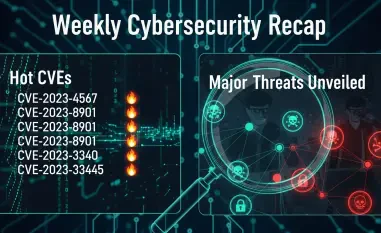The UK Government has unveiled a consultation document titled “Ransomware legislative proposals: reducing payments to cyber criminals and increasing incident reporting,” aimed at addressing the escalating threat of ransomware attacks. Released on January 14, 2025, the document outlines three key proposals designed to reduce financial incentives for cybercriminals and enhance the government’s ability to respond to ransomware incidents.
Rising Threat of Ransomware
Surge in Attacks
Ransomware attacks have surged in recent years, causing widespread public concern and posing significant threats to national security and essential services. High-profile incidents, such as attacks on the NHS and the British Library, highlight the urgency of addressing this growing menace. Ransomware is particularly dangerous due to its potential to disrupt critical services and extort large sums of money from victims.
This consultation document reveals that ransomware has evolved into a sophisticated cybercrime threat that exploits vulnerabilities at the heart of public and private sector functions. The impact on essential services, as observed in attacks against the healthcare sector and cultural institutions, has driven the government to propose measures intended to cripple the incentives driving these malicious activities. With these attacks becoming more frequent and costly, the need for a robust and comprehensive response becomes paramount.
Government’s Response
In response to this escalating threat, the UK Government has proposed measures aimed at disrupting ransomware operations. The consultation document outlines three main proposals, each with its own implications and potential impacts. These measures are designed to reduce the motivation for ransomware attacks and improve the government’s ability to investigate and respond to such incidents.
By implementing these measures, the government aims to make the UK a less appealing target for cybercriminals while simultaneously enhancing its own capabilities to deal with ransomware incidents more efficiently. The proposals address not only the immediate challenges posed by ransomware but also aim to establish a framework for long-term resilience and robustness in the face of evolving cyber threats. The consultation period allows for public and organizational input to ensure that the final regulations are both practical and effective.
Proposal 1: Targeted Ban on Ransomware Payments
Scope of the Ban
The first proposal seeks to prohibit all public sector bodies, including local government and owners and operators of critical national infrastructure (CNI), from making ransomware payments. This expands the existing prohibition applied to central government departments. The objective is to make the UK a less attractive target for cybercriminals by eliminating the possibility of ransom payments from these entities.
This proposed targeted ban represents a bold move to deter cybercriminals by reducing their financial incentives. By extending the prohibition to encompass local governments and owners and operators of CNI, the government aims to create a unified front across various levels of public service. The broader scope is intended to send a clear message that the UK will not be coerced into paying ransoms, thus removing the profit motive for attackers and, ideally, diminishing the frequency of such attacks.
Potential Impact and Challenges
The potential impact of this ban is uncertain. While government-backed bodies may already be less inclined to pay ransoms, there are concerns about how effectively this ban can be enforced and whether it might increase risks to data and service continuity. Additionally, questions remain about whether this ban will affect overseas entities, in addition to those registered in the UK. It’s also noted that this measure will not deter cyber attacks motivated by state sponsorship or data theft rather than ransom payments.
One of the core challenges will be ensuring compliance and effective enforcement across the diverse range of public sector entities. While the ban aims to create a less enticing environment for cybercriminals, there’s a potential risk that attackers might shift their focus towards data theft and state-sponsored attacks, which are outside the scope of financial motivations. Furthermore, the implementation of such a ban could impose significant operational and technical challenges, particularly in scenarios where critical data and services are at stake. The government must therefore consider robust mechanisms for supporting entities adversely affected by this proposal, ensuring that the continuity and security of essential services are upheld.
Proposal 2: Ransomware Payment Prevention Regime
Reporting and Guidance Requirements
The second proposal requires victims of ransomware, who are not covered by the targeted ban, to report their intention to make a ransom payment and enter into discussions with government authorities before proceeding. The authorities would then provide guidance on non-payment resolution options and check for reasons to block the payment, such as connections to criminals subject to sanctions or violations of terrorism finance legislation.
This approach seeks to create an additional layer of oversight and support for ransomware victims, particularly those in the private sector where the inclination to pay may be higher. By mandating pre-payment discussions with government authorities, the regime aims to discourage ransom payments while offering alternative solutions for managing the cyber threat. The intention is to foster a more coordinated response to ransomware attacks, thereby reducing the overall success rate of such criminal activities.
Implementation Challenges
Several implementation challenges arise from this proposal. Many organizations impacted by ransomware have specialists advising on ransom payment legality and options for dealing with the attack. These organizations might not require centralized guidance. Furthermore, the process for engaging with authorities is unclear, raising concerns about the regime’s efficiency and effectiveness. The proposal risks becoming a de facto ban if the ability to block payments is overly restrictive.
An additional concern is ensuring prompt advice from authorities given that timely responses are crucial in ransomware situations. Effective resourcing will be necessary to avoid delays that could exacerbate the impact of attacks. The government seeks input on whether this regime should be subject to a threshold based on the size of the organization or the ransom demand amount.
Organizations might face logistical and operational hurdles in complying with the reporting and consultation requirements, especially during critical attack situations where time is of the essence. The government must establish a clear, streamlined process for engagement and provide adequate resources to ensure that victims receive timely and effective guidance. Furthermore, organizations already well-versed in handling ransomware incidents might find the additional reporting and consultation steps redundant, leading to potential friction between private expertise and centralized oversight.
Proposal 3: Mandatory Reporting Regime
Reporting Requirements
The final proposal introduces a mandated reporting regime for suspected ransomware incidents. It’s still undecided whether this requirement will apply universally or be threshold-based. This proposal aims to bolster the government’s understanding and response capabilities by ensuring that all incidents, irrespective of ransom payments, are reported.
A mandatory reporting regime would enable the government to gather comprehensive data on ransomware incidents, facilitating better analysis and response strategies. By creating a centralized repository of information, authorities can gain valuable insights into trends, attack vectors, and the overall threat landscape. This data-driven approach is expected to enhance the government’s ability to develop proactive measures and improve resilience across all sectors.
Timeline and Overlaps
The suggested timeline involves an initial report within 72 hours and a full report within 28 days. This raises potential overlaps with existing reporting obligations, such as those to the Information Commissioner’s Office (ICO) and the requirements under the UK NIS Regulations. The government has assured, however, that victims would only need to report a ransomware incident once to minimize redundancy.
Ensuring that the mandatory reporting regime is seamlessly integrated with existing obligations is crucial to avoid duplicative efforts and administrative burdens on organizations. The government must work closely with regulatory bodies like the ICO to harmonize reporting requirements and streamline the process. Clear guidelines and support mechanisms will be vital to ensure that organizations can comply with the new regime without facing undue disruptions or complexities in their incident response procedures.
Seeking Feedback
The UK Government has released a new consultation document called “Ransomware legislative proposals: reducing payments to cyber criminals and increasing incident reporting,” which aims to tackle the growing threat posed by ransomware attacks. Published on January 14, 2025, this document features three main proposals intended to decrease the financial motivation for cybercriminals and boost the government’s capacity to manage ransomware incidents effectively.
First, it proposes measures that would discourage organizations from paying ransoms by introducing potential fines or penalties. Second, it suggests that companies be required to report ransomware attacks more promptly, ensuring that the government and other organizations can respond swiftly and share information about threats. Finally, the document calls for improved guidelines and support for businesses to prevent and mitigate ransomware attacks.
These proposals reflect a strategic approach by the UK Government to curb the influence of ransomware on both public and private sectors. The goal is not only to reduce the financial gains for hackers but also to foster a more collaborative and proactive stance in dealing with cyber threats across the nation.













